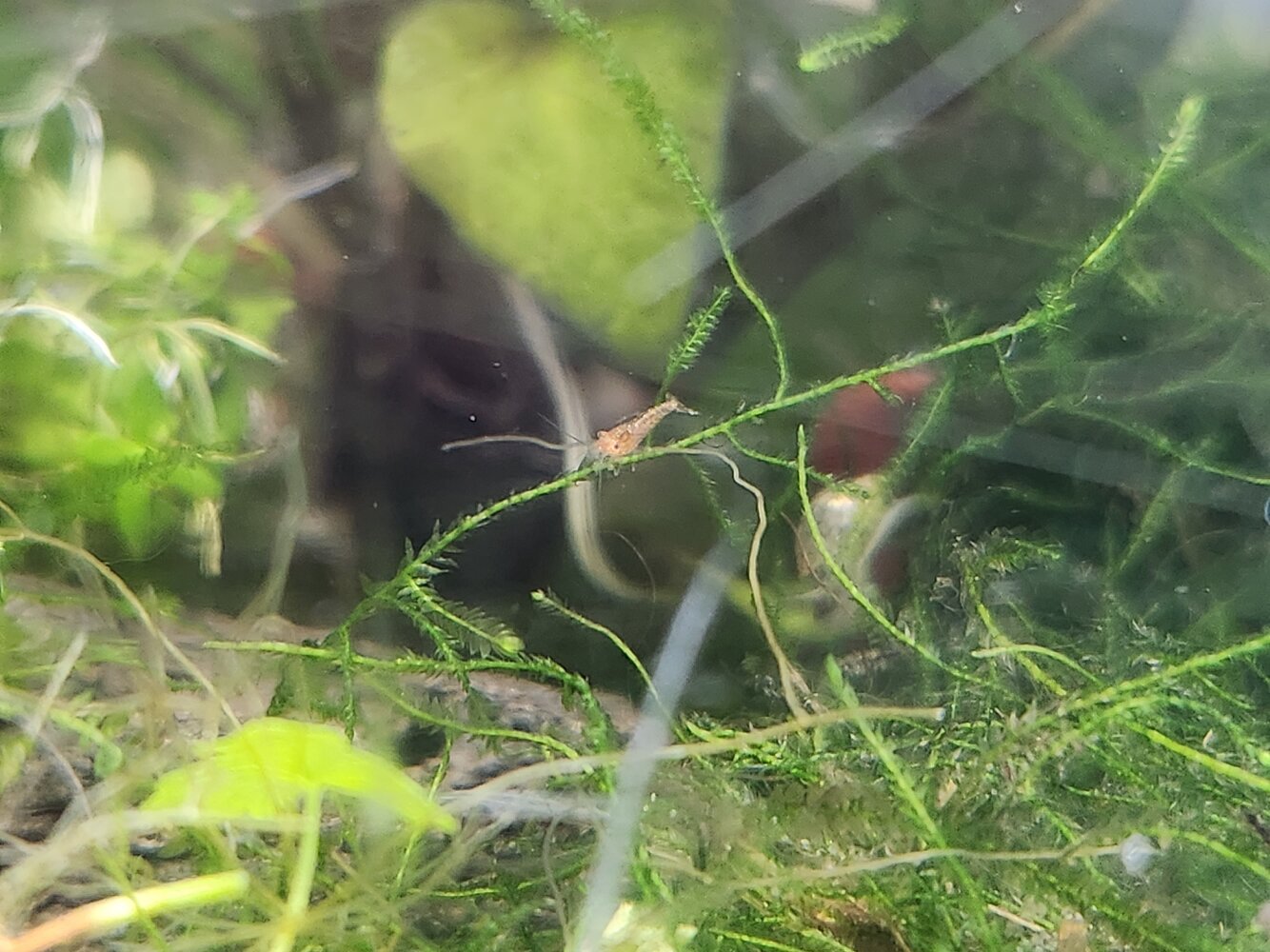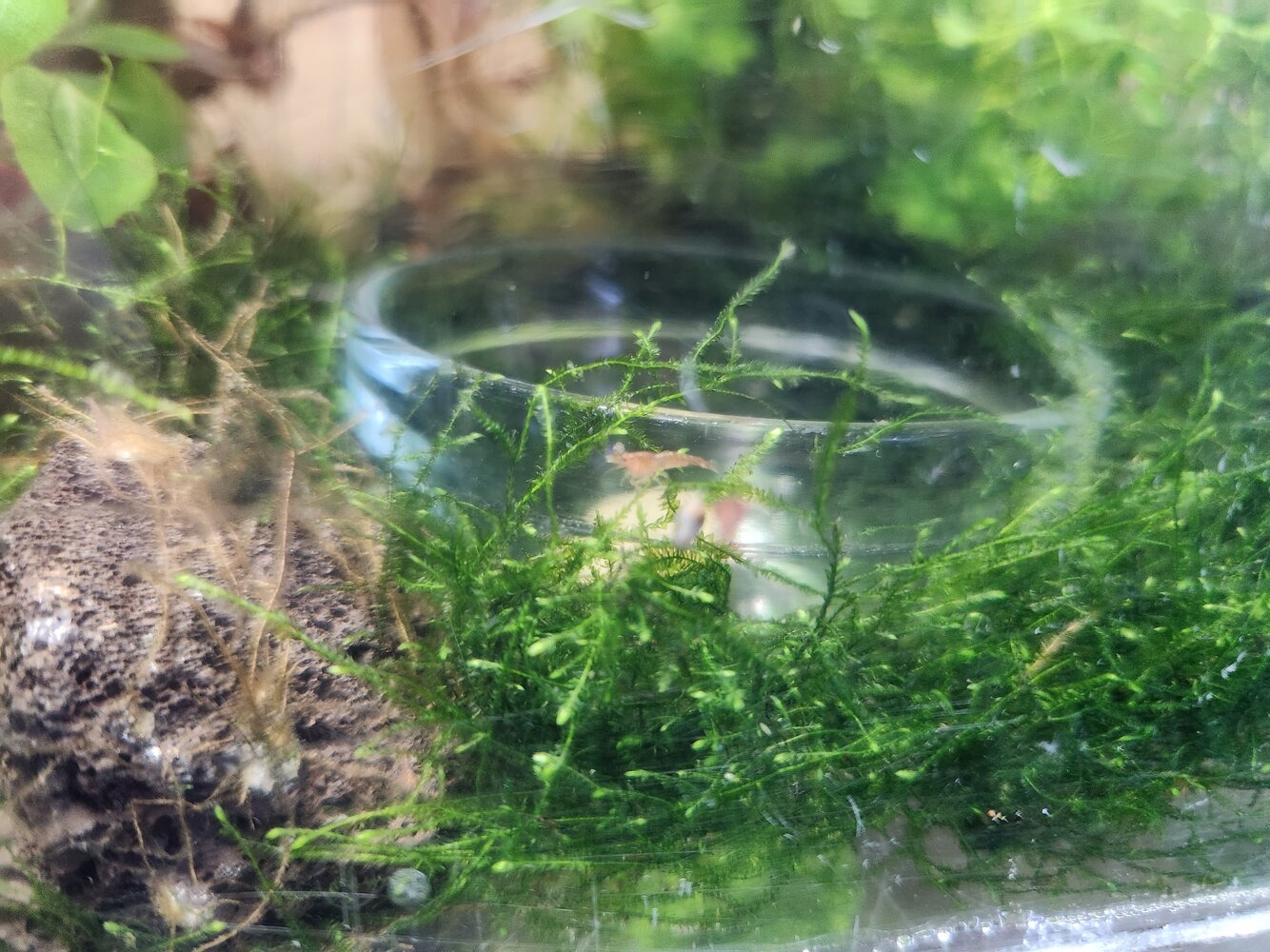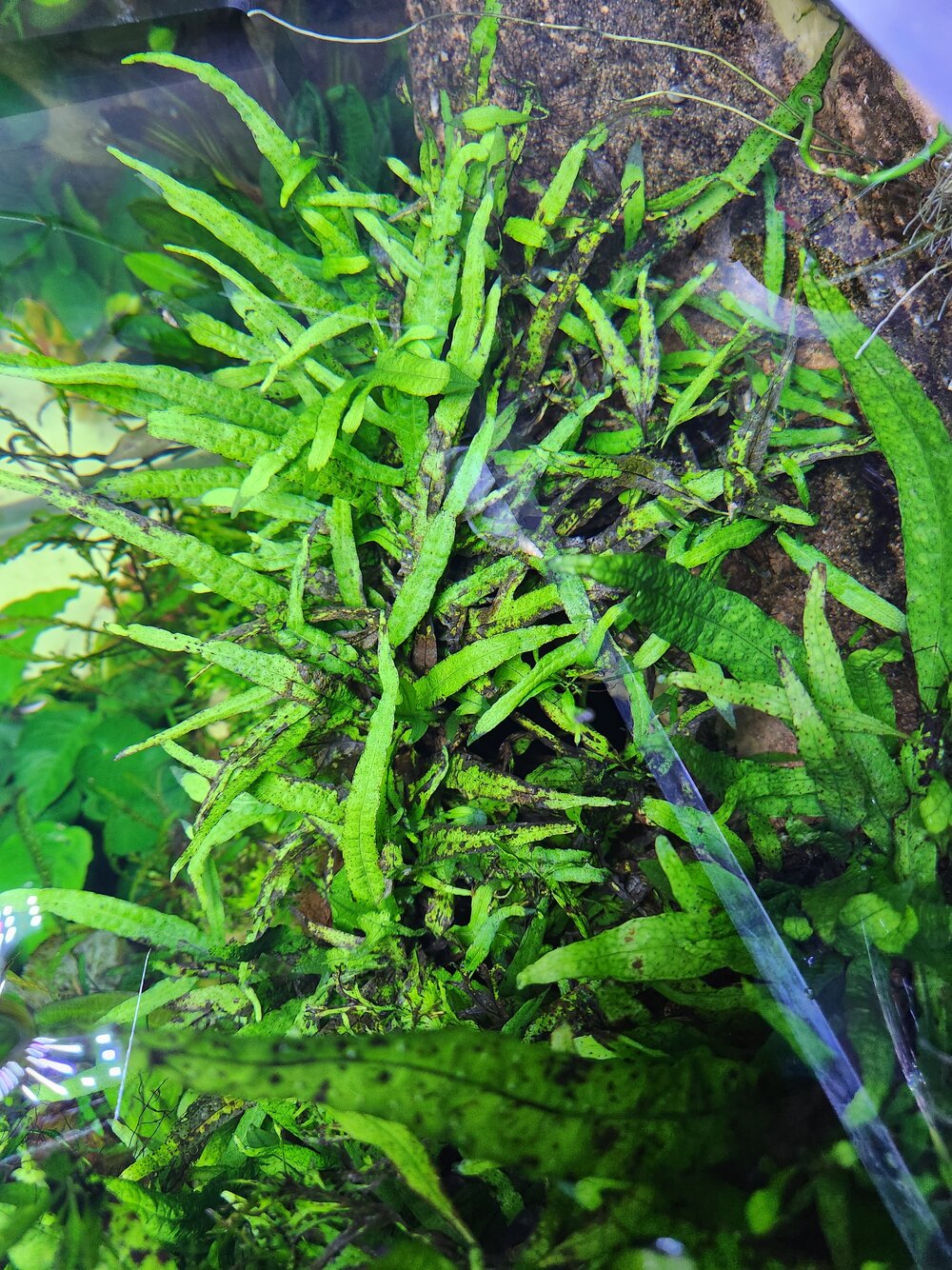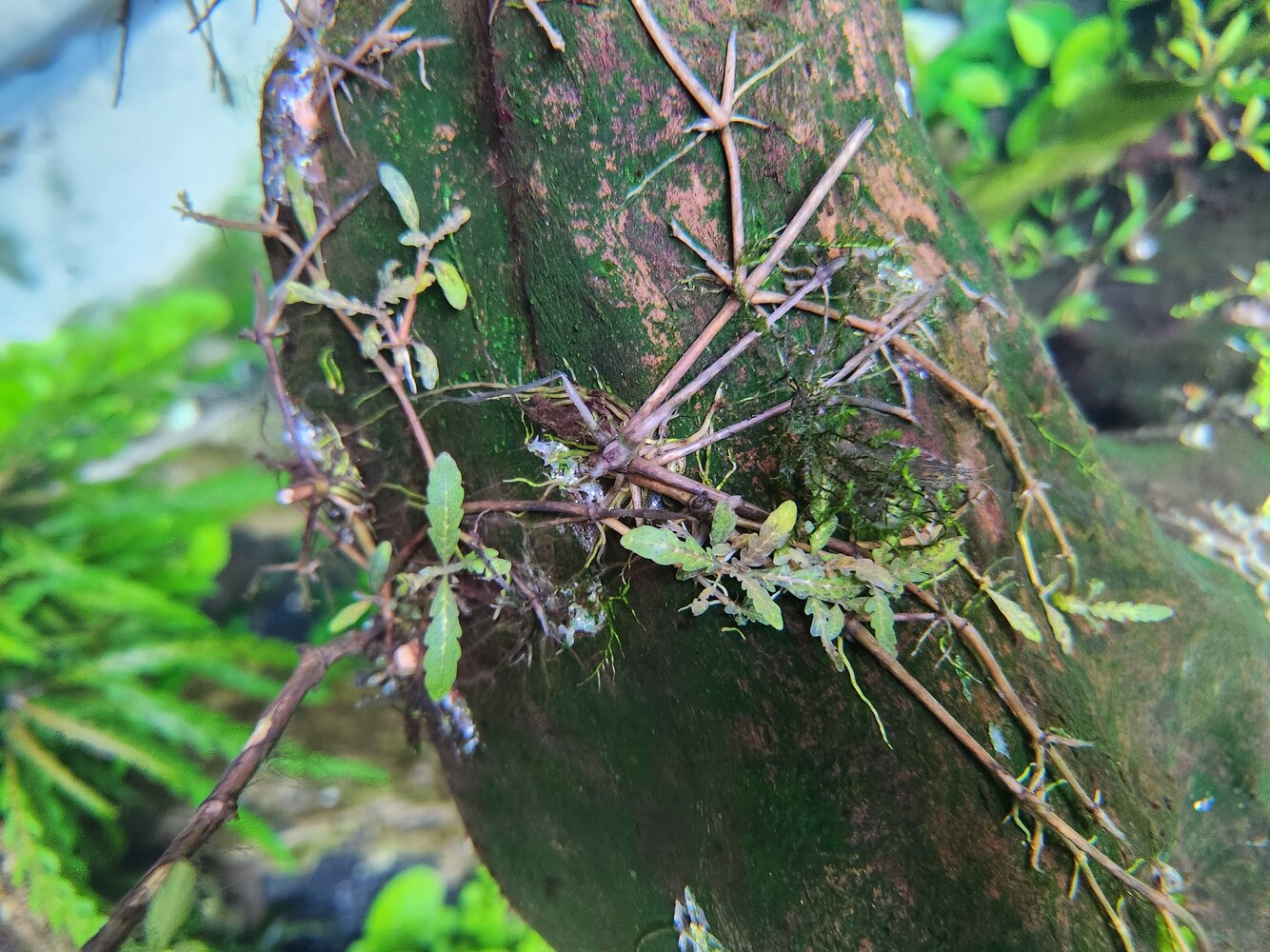I took some better pictures of the conditions the plants have been in the last few weeks. Some plants are affected more a lot more than others, such as the pinnatifida, the swords, hydrocotyle tripartita, and the ludwigia super red. Other plants such as the crypts, anubias, limnophilia aromatica, rotala rotundifolia, and pennywort look mostly fine, but some leaves do have staghorn on them indicating they must not be at full health either. As you can see in the pictures there is a lot of melting in plants, and the swords are growing twisted.
These plants were once looking pretty lush other than pale new leaves. Like I said before I suspect trace toxicity since thats probably the biggest variable I have changed when I increased CSM+B from 0.25ppm Fe to 0.6ppm Fe. I did make a small adjustment in flow and inject CO2 into both return pumps instead of one but I cant imagine any of this causing the plants to
deteriorate this much.
I tested the pH in several locations in the tank and the pH at most varies by 0.05, I cant imagine this being that big of a problem but I could be wrong. Currently dropping the pH 1.2 and it stays very steady. I have plenty of gas exchange through surface agitation/overflow and sump. Dissolved oxygen last read at 99% right in the morning before lights came on. Macros dosing has not changed and is at 12ppm NO3, 2 ppm PO4, 12ppm K, I also dose 5ppm Mg. TDS reading at the end of the week before the 50% WC was 175. TDS after WC and dosing macros was 145. GH before WC 7, KH before WC 3. GH after WC 5, KH after WC 2. The degassed pH after WC is 7.5 and rises to 7.8 by the end of the week before the next WC.
I haven't been dosing micros/iron the last week week and a half and just resumed today. Here is what I will be dosing. This is the total weekly dose which will be split into 24 doses every day.
Fe Gluconate: 0.1 ppm (2.5 grams)
Fe DTPA 11%: 0.1 ppm (3 grams)
(9 grams of Planted CSM+B Adds Below)
Element ppm/degree
Fe 0.2
Mn 0.057
Cu 0.003
Mg 0.043
Zn 0.011
Mo 0.002
B 0.025
Here is the frogbit/duckweed currently after the 1.5 weeks of not dosing traces.
Hopefully plants get better with the reduced micros, and the more frequent iron dosing. I cant think of what else would be causing this.
Edit: One thing I did notice is that plants growing by one of the returns always grew a little translucent, with melting I guess. Sometimes air gets sucked into the pump and microbubbles blow from this return, is it possible the water right by the return pipe is super saturated with oxygen and that is burning the plants right in front of the return? I don't think this is what is causing the problems in all of the tank since plants were once all doing fine, except plants right in front of the return.
We also added the rest of the fish today, mostly siamese algae eaters and more otocinclus.






